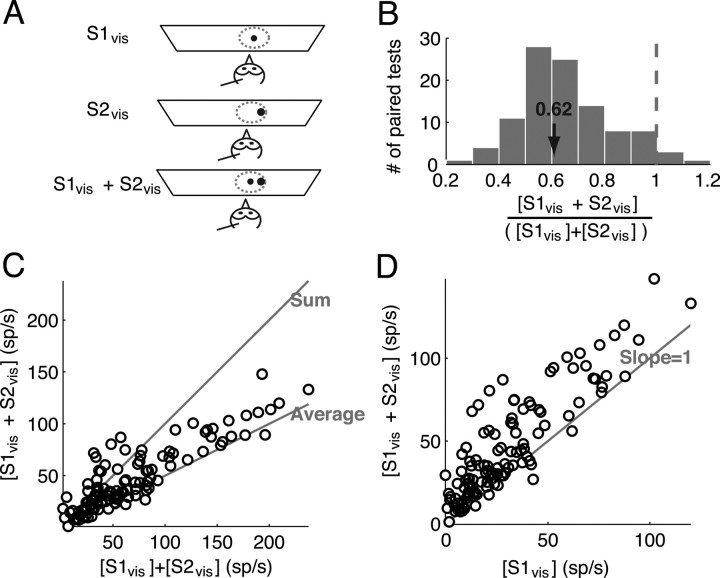Figure 2.
Responses to paired looming visual stimuli inside the RF. A, Schematic representation of the experimental set-up showing (in top-view) an owl, a recording electrode, the tangent screen, the visual RF of the site (dotted circle). One visual stimulus (S1vis, small black dot) was a looming stimulus presented at the RF center, and the second (S2vis, larger black dot) was a faster looming visual stimulus presented inside the RF such that it did not physically overlap with S1vis. B, Distribution of the ratio of responses to two looming visual stimuli (S1vis and S2vis) presented simultaneously inside the RF to the sum of the responses to each stimulus presented alone for all paired tests (n = 30 sites; 118 paired-stimulus tests). The properties of S1vis and S2vis are given in the text. C, Responses to the two looming visual stimuli presented simultaneously plotted against the sum of the responses to each stimulus alone. The data indicate mean values. The lines along which the data points would fall if the responses to S1vis and S2vis were equal to either the sum or the average of the individual responses are indicated. D, Responses to the two looming visual stimuli presented simultaneously plotted against the responses to S1vis alone. The line along which the data points would fall if the responses to S1vis and S2vis were equal to the responses to S1vis alone is indicated.

